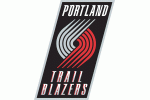Every now and again, I’ll be catching up with those who call sports or elements of sports their job, profession, livelihood — to help give those outside of the business a better understanding of what goes on around the game.
During my time covering the NBA in New York, New Jersey and Portland, there were certain sources and resources I would flock to for information leading up to the NBA Draft to help me learn more about draft prospects I wasn’t already tracking. While some writers around the game are inclined to lean toward Draft Express, NBA Draft.Net or ESPN.com, I always felt Ed Isaacson flew under the radar as a one-man show putting together valuable insight on the college scene. Even when I moved closer to the game and started scouting/recruiting for the Nuremberg Basketball Club in Germany’s 2nd Division for two seasons, Ed’s draft coverage and player analysis proved valuable to help our team make educated decisions on evaluating “talent”.
I always appreciated Ed’s draft, scouting and analysis around the college game and still do.
That’s why I took time to recently catch up with Ed on his process toward general draft coverage, the scouting/writing process and his work on Fansided with “NBA Draft Blog”…
For those not familiar with your scouting work on Fansided, can you share how you got started in evaluating basketball players and how long you’ve been scouting?
While I started NBA Draft Blog 5 1/2 years ago, I think I’ve always been into scouting players. Even playing in high school, the coach would want me to attend opponents’ games and report back what I learned. I’ve been formally scouting for 6 years, and originally the site was created just as a place to store my work. I never thought much about it growing or there ever being an audience for it.
How many games are you watching or attending on a given week? And has that number changed at all from when you first started?
During the season, I’ll watch a minimum of 40 games per week, which includes attending games, especially with a large amount of college teams that come through New York City and the surrounding area during the year. Now, with access to games around the world, I try to find time to squeeze time in for games from Europe, Australia, China, etc. When I first started, my sole focus was really just on the big name draft players, but as time went on, I was continually asked about players at all levels, so now I track hundreds of players of every year, meaning more and more games to be watched.
Do you have a certain philosophy when it comes to evaluating players?
Everyone has their own particular style of how they evaluate, but for me, it all comes down to studying and learning as much information as possible. What you see on the floor is only a portion of what goes into trying to project what a player may do at the next level, so along with watching as much as you can find on a player, it’s also a lot of time spent talking to people, especially those who will have a unique or closer perspective of the players, including their coaches. In terms of the on-court portion, and it may seem somewhat simplistic, but can they play and do they understand what’s happening out on the floor. Each year, more people seemed to get suckered in by things like athleticism and length, but in the end, it always comes down to if you know what you’re doing on the court.
When goes into deciding which player to profile when “spotlighting” a particular player?
There’s no real method to it. It’s part of the reason I’ve always enjoyed doing the site myself. I have complete control over which players I will write about. Now, the goal by the time the draft comes around is to have as many reports done on the players whose names are likely to be called on draft night, but I still need to cater to international teams interested in players, as well as agents who want to know more about players for the future.
How does your approach, coverage to scouting college basketball compare or differ from others who are in the same field online?
It’s a very comprehensive and level-headed approach. The goal is to have a complete story on the player at the end of the year, not after 2 or 10, or 15 games. For example, there’s little use in writing about freshmen this early in the season, even the top guys. Many of them have an advantage early in the season, because the scouting at a team level just isn’t comprehensive enough to really have a plan for them. Once January kicks in, youg players start to struggle a bit as teams figure them out, and it’s now on the player to adjust again. That’s when you learn the most about the young players, when what they do well doesn’t work as much anymore. The thing to keep in mind is the goal of what I do is to break down players’ and project what they should be able to do at the next level. it’s not about whether a guy is drafted 5th or 9th or 20th.
Do you consider those guys competition, do you read anyone regularly?
I know you tend to be a bit critical or skeptical about early draft boards or predictions? Do you feel mock draft boards hurt or help a kids’ chances of being drafted?
Add The Sports Daily to your Google News Feed!
